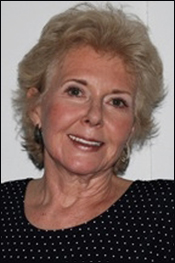Roberta Rich Interview
February 15, 2012
HistoricalNovels.info interviews
the author of The Midwife of Venice
 It was great talking with Roberta Rich on February 15, 2012. She's the author of The Midwife of Venice, about a Jewish midwife in sixteenth-century Venice.
It was great talking with Roberta Rich on February 15, 2012. She's the author of The Midwife of Venice, about a Jewish midwife in sixteenth-century Venice.
In your author's note, you remark, "the history of women, their fortitude and accomplishments, is written in water." That said, what concrete factual detail most inspired your vision of Hannah Levi?
Hannah is purely a creature of my imagination, but I like to think that she, or someone very like her, might have existed. So much of women’s history has been lost. Ordinary women were so busy cooking, birthing babies, and caring for children that only a few of the most privileged women had time to write their thoughts and accomplishments. We are fortunate to have diaries from a few famous midwives like Martha Ballem of Maine. Justine Siegemund of Germany, who was midwife to the Hapsburg family, wrote a wonderful textbook on the art of midwifery. Both books fueled my imagination. I found my research so interesting I asked my editor to add a "Further Reading" page for those who might wish to learn more.
Do any tiny apartments like Hannah's still exist in Venice's old Jewish quarters?
Perhaps, but they are not open to the public. The Venetian ghetto is a fascinating collection of tall, tenement-like buildings, but only a few synagogues are open for tours. There is also a museum of silver and religious artifacts, but not private dwellings. It is easy, however, to visualize Hannah’s apartment - small, dank, airless and sunless.
In creating the atmosphere of Hannah’s dwelling, I was inspired by my favorite museum, the Tenement Museum on the Lower Eastside in New York. It has given me an idea for a book I want to write about a serial killer in New York in the 1930s who murders girls who work in a ladies' shirtwaist factory. This museum has duplicated as accurately as possible the furnishings and atmosphere of a Jewish, a Polish, and an Italian family's apartments. A Lower Eastside tenement would be luxurious compared to its sixteenth-century Italian counterpart, which had no running water, no inside toilets, and no heat other than charcoal braziers.
Hannah’s rabbi causes her almost as much trouble as some of the Venetian Christians. What inspired you to depict him in this way?
I came across the autobiography of Leon Modena, a seventeenth-century rabbi who was, during his long and brilliant career as a learned rabbi, a supremely unhappy man. He suffered from every physical affliction imaginable from shortness of breathe to carbuncles, his children were ungrateful, his favorite son ran away to Brazil, his marriage was a misery, his wife’s tongue was as sharp as a razor. I felt anyone so grouchy and misanthropic belonged in my novel.
Review of The Midwife of Venice by Roberta Rich
See listing for The Midwife of Venice at Powell's Books
See listing for The Midwife of Venice at Amazon.com
See listing for The Midwife of Venice at The Book Depository
Back to Directory of Author Interviews
Enjoy this page? Please pay it forward. Here's how...
Would you prefer to share this page with others by linking to it?
- Click on the HTML link code below.
- Copy and paste it, adding a note of your own, into your blog, a Web page, forums, a blog comment, your Facebook account, or anywhere that someone would find this page valuable.